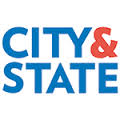
Mergers, Acquisitions and Absorptions in the Not-For-Profit World of Human Services in New York City
Prepared by Arthur Webb, Senior Counselor on Health and Human Services to Capalino, with interviews with two leaders in the field of human services. Donna Colonna, President & CEO of Services for the Underserved (SUS), and William Guarinello, President & CEO of HeartShare.
March 2016
Over the past three years in New York City, there has been an unprecedented upheaval in the not-for-profit world.
This has been marked by a dramatic series of mergers, collapses, acquisitions and absorptions of services and agencies by other nonprofits. Given the financial stress that many human service agencies are facing, it is likely that the phenomenon of mergers and acquisitions will be a more dominant feature in this arena.
In some ways, the disruption of care and services is a calamity for some of our society’s most vulnerable. At the same time we’ve witnessed a remarkable stepping up by remaining and existing not-for-profit agencies and providers. These organizations have demonstrated that they are ready, willing and able to absorb hundreds of individuals and provide and expand the services they have in order to provide continuity of care for several thousand individuals at risk. This is a testament to our commitment to help those in need and to address, overall, society’s well-being. I am not sure that our government totally appreciates this resolve and its responsibility to ensure continuity of care.
This short paper captures the major lessons learned from two CEOs who have recently lead the way in merging, acquiring and absorbing agencies while maintaining financial viability and program integrity.
There are many publications from numerous sources that provide a check list or cookbook on how best to approach and manage mergers and acquisitions. Our purpose is to add anecdotal and analytical value to the literature and practice guides for these events.
A short set of key facts will help frame the lessons learned. The two organizations that are the focus of this paper are Services for the Underserved (SUS), which acquired Palladia, and HeartShare, which acquired with St. Vincent’s Services. SUS is the sole member of Palladia Inc., as is HeartShare with St. Vincent’s. In both cases, the added value from the acquisitions was between $40 and $50 million. At this point, there is no need to lay out all the legal aspects of these transactions.
I conducted interviews with two leaders in the field of human services. Donna Colonna, President & CEO of Services for the Underserved (SUS), and William Guarinello, President & CEO of HeartShare.
Here are some lessons along with Donna’s and Bill’s perspectives:
Every Merger is Different
Even if you had experience with previous mergers or acquisitions, that experience does not necessarily give you any added advantage. Other than, perhaps, building a great understanding of how complicated every transaction is. Agency executives need to start fresh and look at a prospective transaction through a new lens.
Bill:
Bringing HeartShare and St.Vincent’s Human Services together was the right thing to do. We agreed to keep the St. Vincent’s name because of its long history and the organization’s legacy of serving children. Both are steeped in the Catholic mission of service. Since I was very familiar with St. Vincent’s, it didn’t take that much to agree to a merger. Otherwise it would have been tragic to lose these services. What I didn’t realize was how hard it was going to be in terms of time, effort and cash. The combined agency has achieved the synergies we hoped for. The major lesson is that there is no cookie cutter to mergers.
Donna:
Palladia was very deliberate in their search for a good merger partner. Through a limited circulation of an RFI, SUS responded and was selected as the merger partner. This became a full asset merger all under the SUS agency. The lesson learned is that even when both management and boards wanted a merger, it took more time than we thought and took more cash to have a smooth transaction. What was very important is that the state agency overseeing Palladia wanted this transaction to occur and was very supportive. The big lesson is that there is a need to establish trust between the boards and management to make this work.
Every Merger or Acquisition Costs Money
Savings from efficiencies are very difficult to achieve and may be elusive. Don’t be beguiled by the prospect of getting bigger just because outside advisors are screaming at you that you must get bigger to better gain leverage in the marketplace.
Carefully examine your financial viability now and into the future with each merger or acquisition. Most nonprofits live in a world of small operating margins and it wouldn’t take much to push your agency into the red. Thinking that you can turn around an agency that is financially weak and operationally dysfunctional in a short period of time is wishful thinking. It’s not going to happen.
Bill:
While we saw the potential value in merging with St. Vincent’s, it took a considerable amount of due diligence to understand all the financial obligations to satisfy vendors, employees and other obligations. The amount of cash to complete the deal was more than we expected and more than the HeartShare board expected. You have to realize what you see is often not what you get.
Donna:
The due diligence we conducted was extensive. We examined every asset and obligation; we met with the banks to understand how we can extend credit or satisfy past obligations; and we turned over every payable and receivable. While our early cash estimates were relatively accurate or in the ball park, the actual amount of cash to absorb a $50 million business was sizeable. What is often missed as an opportunity is getting in early even before a merger is completed to help stop the bleeding. Get an early engagement and start reducing unnecessary expenses. Get the fixes in early. Even if the merger or acquisition is not consummated, the troubled agency will be better off, if not necessarily to survive, but to be better positioned.
Always Start with First Principles
The hard questions start with: Is this merger or acquisition strategically valuable to my organization? Does it complement my current services, my current capabilities, and my current management and administrative strengths? How much do we need to learn about these services? Indeed, knowing and understanding the potential synergies should be supreme, as well as knowing what the cost of getting those synergies will take.
Of course, all the checklists and cookbooks insist on starting with assessing the alignment of values. For sure, but the truth is that every agency has a different operating culture, different leadership styles, and different core values. It is so hard to dig into these factors because of the time pressure, legal process and financial due diligence that take over and drive transactions.
Bill:
Being steeped in the Catholic tradition of service, the values of HeartShare and St. Vincent’s were clearly aligned. The anticipated synergies with the alignment of services for children and persons with intellectual and developmental disabilities have proved to be successful. It was harder to assess all the capabilities, management strengths and strategic positioning of the combined agencies since both the child caring and IDD fields were and are going through major transformations. The lesson learned is that even when you think the values are aligned there will be a banging or clash of cultures as the integration process proceeds.
Donna:
With Palladia, SUS was stretching its reach to cover the full continuum of behavioral health services. With the coming of managed care for BH services, the board and management clearly saw the value of the combination in terms of market share, greater efficiencies and more service choices. We conducted several strategic planning sessions using outside consultants. These sessions highlighted the importance of having a full continuum of care.
Integration of Services Takes Time But Start Thinking About This Early On
Integration is messy, time consuming and never goes the way you think it will, including those practical things like meeting the first payroll or assigning management roles.
Appointing a team to lead the way is essential. It requires special attention and is almost impossible to only use the existing structure to assume responsibility. The team has to have the authority to command attention and resources in order to conduct an early assessment of how services, personnel and practices can bet integrated.
Getting the new personnel assigned to their respective roles that have clear lines of authority and communication is a must even if down the road it changes because of other factors.
A very tricky part of this messy business of integration is trying to drive out inefficiencies while driving in what is considered best practices. Inefficiencies are not so obvious despite the promise of those early back-office operations that are always the likely targets for reductions.
Bill:
Every day even after two years, we are looking for ways to be more efficient. Despite our best-laid plans, the actual integration was complicated. We essentially imposed new management over St. Vincent’s and while this was the right thing to do, it continues to be a work in progress. The merger is fulfilling our initial thinking that a combination was the right thing to do. The lesson is that no matter how hard we try, the levels of anxiety and stress are raised all around the agencies. The key is to be straightforward and transparent.
Donna:
Indeed, integration of services is a messy process. We continue to assess, align and reorganize services. Getting the right management engaged and involved was critical. The lesson is that every agency has its own culture and we are constantly working to infuse the culture of SUS throughout the combined services. SUS has worked for many, many years in building a strong culture under the belief that the greater coherence of management and operations around values, the greater the likelihood of success. This is reaffirmed every day. Making this work in the newly acquired agency continues to be a work in progress but SUS will not compromise our values.
These lessons are ongoing and never ending. The often referenced management approach is to have a continuous learning organization. Having the ears open for new lessons learned leads to new and often innovative opportunities.
For both of these organizations, the real success is ensuring the continuity and access to care for the most vulnerable individuals in our society. This is the hallmark of these organizations.
Arthur Webb is the owner and principal of the Arthur Webb Group. He has close to 40 years of experience in the field of health care. He is recognized for his work in building systems of care for some of the most difficult to serve persons. Having been in top executive roles for most of his career, he understands the dynamics of creating solutions for organizations that are effective and efficient.
With almost 18 years as public official in New York State government including responsibility for Medicaid budgets in the state budget division; commissioner or director of four government agencies including Department of Social Services (the welfare, Medicaid and social services agency, which was re-organized in the 1990s); Office of Mental Retardation and Developmental Disabilities; Office of Substance Abuse Services (integrated into the Office of Alcohol Substance Abuse Services—OASES); and Health Planning Commission—now defunct.
As a provider, Mr. Webb was president & chief executive officer of Village Care of New York and, most recently, chief operating officer of St. Vincent’s Catholic Medical Centers in New York.
For more information about Arthur Webb, visit http://arthurwebbgroup.com/
Sign up for our weekly newsletter here to keep up with the latest news in New York.



